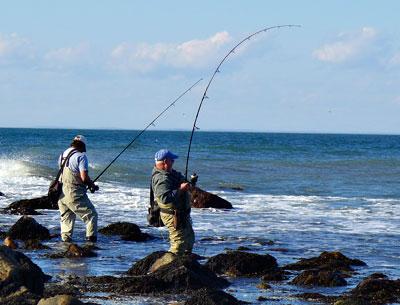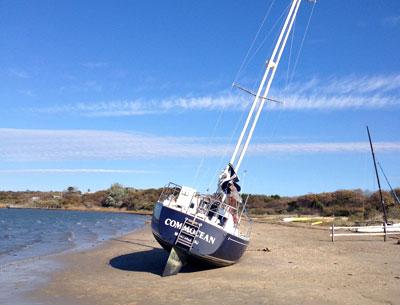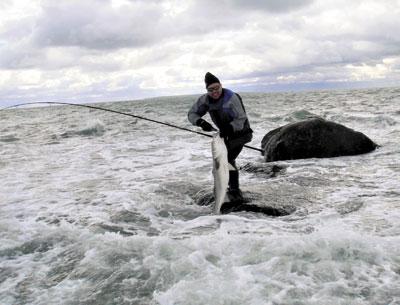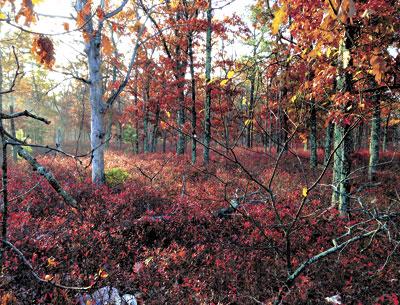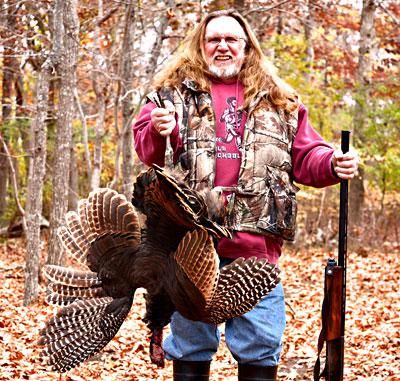Nature Notes: Turn Right on Oak Street
Nature Notes: Turn Right on Oak Street
Trees figure prominently in Long Island street and road names, much more so than animals. Why? Perhaps it’s because trees are large in stature and immobile, while animals are smaller and liable to be in one place one day and another the next. Before concrete monuments were used by surveyors to mark metes and bounds for various properties throughout New York in the original division of the state’s lots, trees, especially white oaks, were cut off above the lowest lateral branch so that the tree became disfigured and obvious, going by the name “lop trees” or “boundary marker trees.”
Thoroughfares and their offshoots were often named after trees they passed through as the land became settled by Europeans from the 15th century up to the present day. Thus a listing of streets with trees in their names is a good indication of the predominance of such trees over the years here on eastern Long Island and of those that became common after their importation, such as the black locust.
The Hagstrom Suffolk County Atlas of 1998 names all the streets in the five eastern towns up until that time, and offers a good idea of the frequency of certain tree species. Even school children can give you names of our most common trees like oaks, maples, and willows. On Long Island the three most common trees are oaks, pitch pines, and junipers, a k a eastern red cedars. The junipers followed the oaks and pitch pines, however, as the land had to be cleared first before they shot up, except in instances of natural grasslands such as the Hempstead Plains where they were from the beginning.
An examination of the street names in Long Island’s largest town, Brookhaven, gives a glimpse of the trees most prevalent on the Island. Shelter Island is the smallest town and the one most removed, being surrounded by water. East Hampton and Southold are the farthest from the original source of our trees after the last glacier receded, the Appalachian forest. They don’t have some of the species, such as the tulip trees and sweet gum, or liquidambar, found farther west on Long Island. They just haven’t gotten here yet.
The 1998 atlas lists more than 7,250 roads and streets for Brookhaven. The most common tree name among them is oak; at least 69 of those streets begin with oak. The next most common tree street names, 58 of them, begin with pine. By contrast, the atlas lists about 1,250 East Hampton street names and only 250 for Shelter Island. Accordingly, East Hampton, which is largely covered by oaks and pines, has only six oak street names and four named after pines. Shelter Island is not at all piney, and doesn’t have a street with pine in its name, but is very oaky and has three street names beginning with oak.
Brookhaven has 59 streets with cedar (i.e., juniper) in their names plus five starting with Juniper. Brookhaven didn’t have any grasslands, so to speak, when first settled, so we can only imagine that the cedar-juniper named roads were latecomers. Names beginning with chestnut account for 17 of Brookhaven’s roads and only one East Hampton Road. American chestnuts on Long Island were quite common until they were wiped out by the chestnut blight of the 1800s and 1900s.
Black locusts were imported from the South early on and used extensively in construction. Twenty-two street names in Brookhaven begin with locust, only one in East Hampton, but four on Shelter Island. In early times only one magnolia, the sweet bay, populated the upper edges of streams, several of which were in Brookhaven, but none in East Hampton and Shelter Island. Thus of the three towns, Brookhaven is the only one with magnolia-named streets, 10 of them.
The name for our Long Island tupelo, Nyssa sylvatica, is pepperidge in New England. Long Island was mostly populated by settlers from New England, thus Brookhaven Town has five streets beginning with pepperidge, East Hampton has one, while tupelo only appears in one Brookhaven street name. Maples, laurels, walnuts, dogwoods, willows, hollies, and sycamore, in that order, are the next most frequently found trees in Brookhaven street names. They are all natives and have been here for thousands of years.
There are only a few native ashes on Long Island, all in the western part. Five Brookhaven streets begin with ash. Hemlocks were not uncommon on Long Island, but retreated to the north along with the spruces and birches early on. Two streets in Brookhaven start with hemlock, none in East Hampton or Shelter Island.
In rare cases a foreign tree not present on Long Island appears in a street name. Thus there is a Mahogany Street in Brookhaven. Mahoganies are not cold-hardy and could not survive here. Although many streets in California contain the name eucalyptus, commonly planted in that state, none do here, and, as far as I can tell, there are none of that Australian genus living here, unless in greenhouses or as potted plants in homes, offices, restaurants, or hotels.
In closing I am reminded of the Nancy Goell rule coined while she was the head of America’s Group for the South Fork in Bridgehampton. If a new subdivision street is named after a plant or an animal, such as Canvassback Lane in Quogue or Bobwhite Drive in Southampton, the odds are better than 10 to one that the critter is no longer in the area.
Larry Penny can be reached via email at [email protected].

